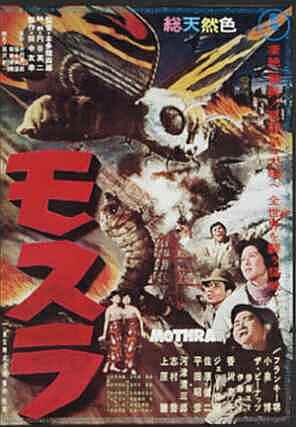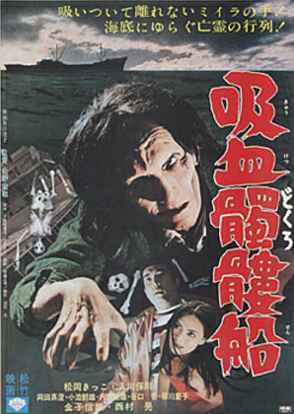It Came From Tokyo: Japanese Movie Posters
Japanese Movie Posters
Chuck Stephens, Tetsuya Masuda, Kairakutei Black
Cocoro Books, $30.00

There can really be no argument: film posters are works of art, in a way that no other advertising medium can quite match. Hang a car advert on your wall, and people will look at you strangely, but a movie poster is simultaneously aesthetically pleasing, cool and a statement about your personality. Room with a View or Stewardesses in Heat? The choice is yours…
Bruce Hershenson’s collections of posters, mostly themed by genre, have done sterling work in gathering some of the best examples of such art, but are limited in scope, covering only the output of Hollywood. Just as great films are produced around the world, so it is for great artwork, and Cocoro Books’ collection of promotional material for Japanese movies is particularly welcome because it opens the doors to a world that is little known in the West.
The book is divided into seven categories: yakuza, sci-fi and monster, samurai, pink, horror, animation and new cinema. “Pink” is the Japanese term for erotic films, and the posters therein are eye-popping, simply because they are notably more explicit than anything permitted in America or Britain – along with the nudity, bondage and coercion seem common themes – making them perhaps somewhat questionable candidates for decorating your living-room.

Less likely to offend your maiden aunt are the yakuza films, featuring tough guys (and gals – in one case, even nuns!) looking…well, tough. The samurai section is not dissimilar; swords replace guns, but the emphasis is still on staring Very Intently. A number of the titles in the animation section may seem familiar, since it’s one area where Japanese cinema has made significant exports in recent years. But the poster for Ghost in the Shell is still different enough from the Western one to be striking.
However, my favourite section of all was the one devoted to the monsters, simply because these are films for which there is no real equivalent in the English-speaking world, as the woeful Hollywood Godzilla proved. Whether it’s the Tokyo Tower being destroyed by Mothra’s caterpillar, or what looks like a giant narwhal with a laser-beam coming out of its forehead (that’ll be Jigura, then), these provide a glimpse into a universe that is at once fascinating, frightening and surreal.

Each poster is accompanied by three or four lines of information on the film (studio, year, etc.), and trivia about it. Each section is also prefaced by commentary from Masuda and Black, talking about the genre’s history and place in society. These little mini-essays are teasingly short, and I would have welcomed their extension to greater length.
The book also operates as a catalog for Masuda’s store, @wonder, offering all the posters in the book for sale, at prices ranging from $20 for the new films, up to $150 for Sleepy Eyes of Death and the fabulously named Ship of Blood-Sucking Skulls. If the walls here weren’t already completely covered – with poster-tubed reserves waiting in the cupboard – there are a number I’d be very tempted to acquire.
Maybe instead I’ll just buy an extra volume of the book, so I can hack it apart and frame individual pages as mini-posters. But what, then, to do when we have Mothra on one side, and Son of Godzilla on the other? Better make that two more. Such cunning marketing, which requires the reader to purchase multiple copies of the book, can only be admired. Sigh… 🙂
For more information, see the publisher’s website – the book is also available from Amazon.